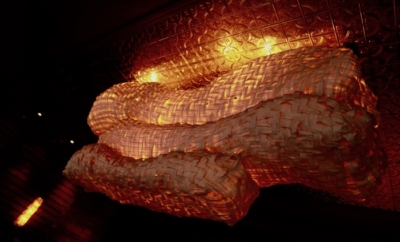
Psychoanalysis
Store Consciousness
A lot of people accept the theoretical explanation of the unconscious but have a hard time seeing how it operates in their lives. We like to believe that we are in control of our thoughts and actions. A realm of experience outside of our awareness seems mystical.
Actually instead of understanding your unconscious as its own entity, it’s more accurate to see it as that part of your lived experience that has not yet risen to conscious awareness. There is no such thing as ‘The Unconscious’. Each of us has different thoughts, emotions, and experiences that remain outside of our conscious awareness. In Buddhist psychology the unconscious is called store consciousness and the conscious is called mind consciousness. These definitions do a better job of closing the gap, seeing the two as the same entities at different levels of awareness rather than as distinct entities.
The best way to help you understand how unconscious experience moves to conscious experience is to consider physiological processes. Think about hunger, for example. Let’s say you forgot to eat breakfast this morning and when you got to work you found yourself swamped with a barrage of new projects. Before long your body started sending you signals like a grumbling stomach, lightheadedness, and decreased concentration indicating that you needed to eat. But especially if you were busy you might not have recognized these signs for a while. Then all of a sudden it dawned on you that you were hungry.
While the gap is usually quite short between physiological processes and conscious awareness of what they mean, we can spend our whole lives neglecting unconscious thoughts and emotions that are waiting to rise up. In therapy the ‘aha!’ moment is when previously unconscious mechanisms rise up to conscious awareness. What is interesting is that almost everyone says a version of “I always knew this to be true on some level.” I think the sentiment accurately shows the fluidity between unconscious and conscious thought. They are the same but exist at different stages of awareness.
Most of us find it much easier to allow pleasant thoughts and feelings to enter our conscious experience than unpleasant thoughts and feelings. We construct walls around the painful experiences we have had and hope that by ignoring them they will go away. This strategy always backfires though. Painful thoughts and feelings are like mosquitoes buzzing in your ear. They might seem small but they have the ability to negatively influence your whole being until you confront them.
One way to break through is to recognize that every thought and feeling, pleasant or unpleasant, is valuable because of the important information it can convey about the practice of your life. By letting these seeds sprout in your conscious thought and inviting them to tell you their message, the power they have over you instantly decreases. They become friends instead of feared adversaries.




